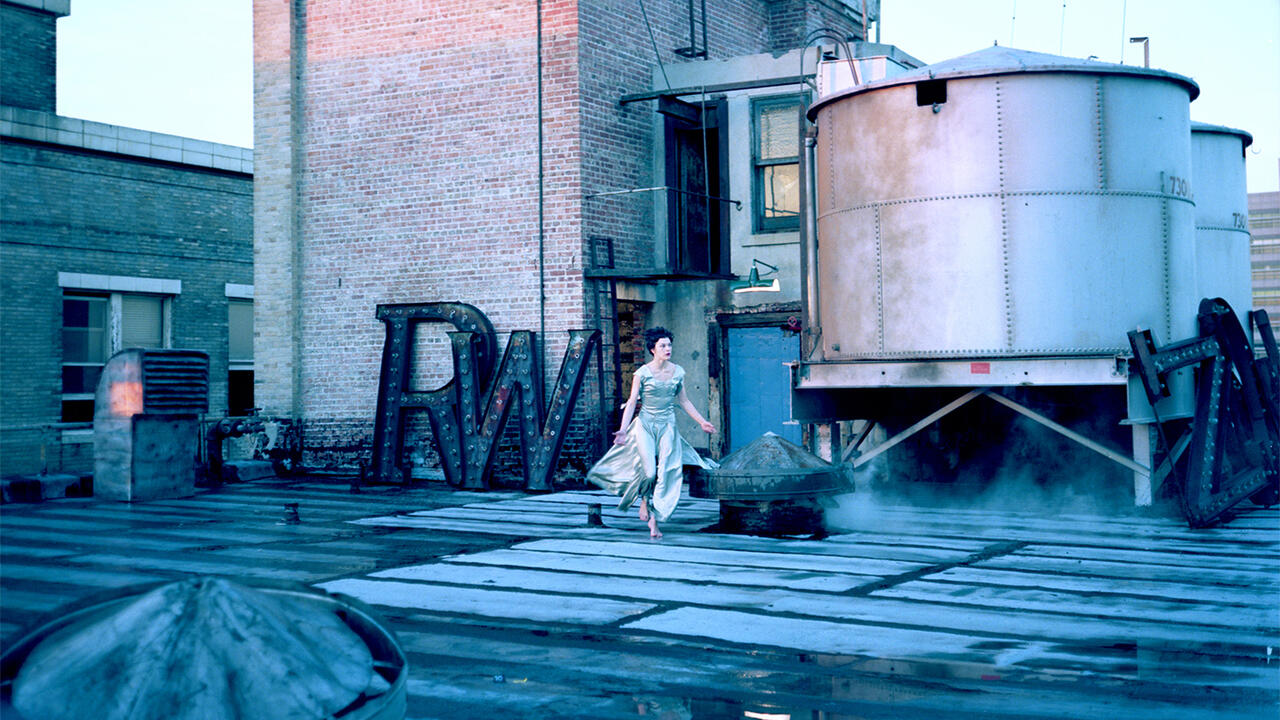The Banal Essentialism of ‘We Are Who We Are’
Luca Guadagnino’s new HBO series treats identity like an Instagram filter
Luca Guadagnino’s new HBO series treats identity like an Instagram filter

We Are Who We Are (2020), a new HBO limited series by Luca Guadagnino, would love to capitalize on the success of the Italian director’s famed romantic drama, Call Me By Your Name (2017). The film made Timotheé Chalamet an international superstar, a peach an internet celebrity and a story about pederasty a surprise Oscar winner. Guadagnino’s first foray into television, similarly, has a self-reflexive phrase of five monosyllables for its title and, like #CMBYN, is saturated with a warm yellow light reminiscent of the Instagram filter Valencia. The series follows moody 14-year-old Fraser Wilson (Jack Dylan Grazier) to a US military compound in Chioggia, Italy, where he moves with his mother, Sarah (Chloë Sevigny), the new base commander, and her wife, Maggie (Alice Braga). There, Fraser befriends his tomboy neighbour, Caitlin Poythress (Jordan Kristine Seamón), and together the teens explore their latent queerness, guarding each other’s secrets from their rowdier friends. They study before-and-after photos of gender transitions online with hushed awe. Both Grazier and Seamón have a mesmerizing physicality upon which Guadagnino lavishes much attention, from Fraser’s clumsy tromp to Caitlin’s elegant dives into the lagoon.

The show is packed with voguish references. Tracks by David Bowie, Klaus Nomi and Frank Ocean punctuate a languorous score by Dev Hynes, who Fraser buys tickets to see live in Bologna. In another scene, Fraser flirts nervously with a hot cadet over a library copy of Ocean Vuong’s Night Sky with Exit Wounds (2016), and later proclaims his love for Demna Gvasalia, the creative director of Balenciaga and founder of Vetements. (Gvasalia could have costumed Sevigny, who manages to look chic even in her fatigues.) By the time Fraser begins muttering ‘Michiko Kakutani’ under his breath in a jumper that reads ‘FUTURISTIC TEENAGERS’, these pretentious appeals start to feel a little desperate.
The spare plot drags on listlessly. The first two episodes cover an identical timeframe – viewed initially from Fraser’s perspective, then Caitlin’s – but barely differ in their interpretation of events. Excitement finally arrives in Episode 4, after Craig, the eldest of their friend group, proposes to his girlfriend on the eve of his deployment to Afghanistan, and a shotgun wedding devolves into 45 minutes of swimming, slow-motion dancing and spaghetti-slinging. By the end of this, nothing of consequence has been said about either marriage or Afghanistan.

This is a trend throughout We Are Who We Are. The most interesting thing about the show is its setting, yet it pays relatively little attention to Italy or the US military. The base is considered US soil and its internal culture is thoroughly Americanized, but its relationship to the community of Chioggia can be tense. At one point, Sarah confronts Caitlin’s father, Richard, about a drunken brawl his battalion started with several local men at a pizzeria. ‘They insulted America,’ he says of the Italians, and they stare at each other in silence for an eternal minute. The fight is never spoken of again. A series that trusts its audience’s cultural literacy this much should have a more substantive message about violence, entitlement and xenophobia. Flashes of the 2016 US election – Hillary Clinton’s speech to the Democratic National Convention, a pro-Trump ad, MAGA hats arriving in the mail – are no more than a coy flirtation with politics that now, two weeks before the country’s next major election, feels like a cop-out.

Fraser’s relationship with his mother is even more peculiar. In the very first episode, he slaps her when she doesn’t slice roast beef to his liking; in the second episode, he threatens to kill her when she treats Caitlin with kindness. Why is he so troubled? Are we supposed to consider Sarah emotionally manipulative? Or is Fraser scarred by his family’s frequent relocations and conditioned towards aggression by the militarism on display outside his home (which he barely seems to notice)? His anger resembles the jealousy Caitlin’s brother, Danny, exhibits toward her for receiving more love and attention from their father. In both cases, pat characterizations can lead to problematic conclusions: that Danny is another repressed African American man, and that Fraser bears the emotional trauma of a lesbian household. Intentionally or not, Guadagnino indulges these loathsome stereotypes.
The emotional turmoil of We Are Who We Are feels like a Gen X parent’s pained attempt to reconstruct the mood swings of their child. Its highly politicized context is never connected to the inner struggles of its characters, as though identity were formed in a vacuum. This seems more reflective of the ‘slacker generation’ to which Guadagnino and Sevigny belong – noted for its political apathy and individualism – than of the Zoomers at the heart of the series. (Guadagnino could learn much from TikTok, where gender-fluid 13-year-olds have been organizing to thwart Donald Trump’s re-election.) In its very title, We Are Who We Are embraces a banal essentialism that its core subjects have plainly rejected. The kids are alright, after all.
Main Image: We Are Who We Are, 2020, film still. Courtesy: HBO
























